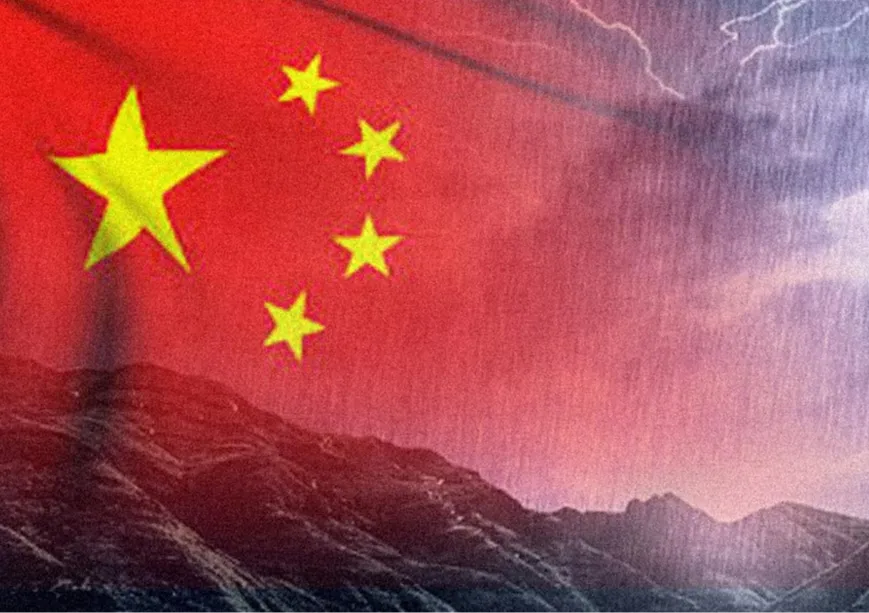
On 19 January, inaugurating the 35 infrastructure projects of the Border Roads Organisation (BRO) in Uttarakhand, Indian Defence Minister, Rajnath Singh, remarked “Climate change in the country [India] is not just a weather-related phenomenon, but the matter is related to national security”. Singh made this definite statement without mentioning China, positing “Certain [Indian] border States like Uttarakhand, Himachal Pradesh, Sikkim, and Union Territories (UT) like Ladakh have noticed an increase in the number of natural disasters in recent years. The Himalayas extend to other states as well, but such incidents are confined to certain States only, and we cannot ignore that.”
However, the hint is quite clear as these states border Tibet and are the areas where the Line of Actual Control between India and China stands disputed: the western sector (Aksai Chin in Ladakh region), the middle sector (Himachal Pradesh and Uttarakhand) and the eastern sector (Sikkim and Arunachal Pradesh).
The state government of Assam contended that despite no massive rainfall, the state witnessed severe flooding, resulting in the third wave of flood which is perceived as an interference by China in the natural ecosystem in Tibet.
Singh also affirmed that, “India’s Ministry of Defence has taken it very seriously and will seek help from friendly countries to study and rule out any involvement of any enemy country on this issue.” The term ‘enemy’ itself is self-explanatory as India has adversarial relations with China. In the past, some Indian states have speculated on Chinese interference. In 2018, the state government of Assam contended that despite no massive rainfall, the state witnessed severe flooding, resulting in the third wave of flood which is perceived as an interference by China in the natural ecosystem in Tibet. Thus, the looming question remains: Is China modifying the weather?
In 2020, the State Council issued a circular stating that China will possess a developed weather modification system by 2025 and the total area of artificial rainfall (snowfall) operation will reach beyond 5.5 million square kilometres. By 2035, China’s weather modification should arrive at a worldwide advanced level in terms of operation, technologies, and services. In June 2023, the National Development and Reform Commission and China Meteorological Administration (CMA) convened a meeting on weather modification work, boasting China’s large-scale and effective weather modification operational strength with a complete system. While difficult to assess China’s intentions, what is certain is that China is serious about weather modification.
It is important to note that the World Meteorological Organisation does not advocate weather modification practices as ‘weather as a weapon’ has been used in the past. During the Vietnam War, under its ‘Operation Popeye,’ the US utilised cloud seeding techniques to induce rain, extend the monsoon season, and flood the Ho Chi Minh Trail, the main route that enemy fighters were using to deliver their supplies. Thereafter, in 1976, the United Nations passed the Convention on the Prohibition of Military or any other Hostile Use of Environmental Modification Techniques (ENMOD) which prohibits states from engaging in military or any other hostile use of environmental modification techniques having widespread, long-lasting, or severe effects as the means of destruction, damage, or injury to another state party. Today, 78 states are party to the Convention.
The State Council issued a circular stating that China will possess a developed weather modification system by 2025 and the total area of artificial rainfall (snowfall) operation will reach beyond 5.5 million square kilometres.
Indian Defence Minister’s remarks on “climate as national security” stand justified. India’s concerns over China’s intentions and actions are grounded based on the following reasons: First, there is no binding on China to abide by the norm of not manipulating weather as Beijing is not a signatory to the ENMOD. In 2005, Beijing agreed that the Convention shall apply only to the Hong Kong and Macao Special Administrative Regions of China. Second, China has already proved its capabilities by its large-scale event-driven weather modification practices undertaken in 2008 Beijing Olympics, the 2014 APEC summit, National Day parades, the centenary celebration of the Chinese Communist Party in 2021, the Winter Olympics in 2022 and others. South China Morning Post reported, that a research paper claimed that the artificial rain that was created reduced the level of the air pollutant PM2.5 by more than two-thirds, and improved air quality from “moderate” to “good” under the World Health Organization standards, ahead of the Party’s Centenary celebrations.
Third, China, today, runs the biggest weather modification programme. Since 1949, China has consistently made developments in its weather modification, be it establishing the Chinese Meteorological Institute in 1978; passing its first-ever “Weather Modification Law in 2002; adding weather as a component to its Five Year Plans in 2005; allocating US$ 1.34 billion in the period 2012-2017 to support weather modification programme, launching the largest weather-control machine to be installed in the Tibetan Plateau in 2018, and others.
Fourth, given the proximity to India, the construction of fuel-burning chambers by China on the Tibetan Plateau to enhance rainfall does raise concerns for India and the rest of South Asia. As the South China Morning Post reported, more than 500 burners have been deployed on Alpine slopes in Tibet, Xinjiang, and other areas for experimental use.
India should monitor China’s weather control activities in the Tibetan Plateau to avoid unwarranted risks from cloud seeding practices.
While it is difficult to predict the potential immediate effects of China’s cloud seeding operations in the Tibetan Plateau, India must be alert. India should monitor China’s weather control activities in the Tibetan Plateau to avoid unwarranted risks from cloud seeding practices. As weather has historically been used as a weapon in warfare, India must assess the geopolitical and strategic implications of China’s activities and thus, develop its expertise to mitigate artificial weather-born calamities.
Dr. Amrita Jash is an Assistant Professor at the Department of Geopolitics and International Relations, Manipal Academy of Higher Education (Institution of Eminence), India.
The views expressed above belong to the author(s). ORF research and analyses now available on Telegram! Click here to access our curated content — blogs, longforms and interviews.




 PREV
PREV


